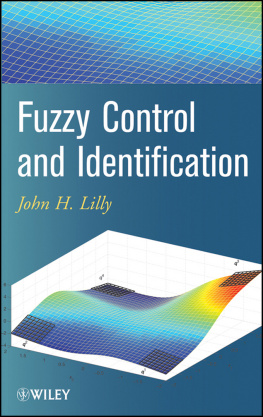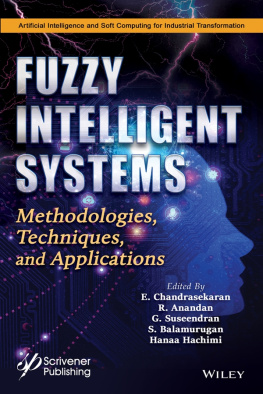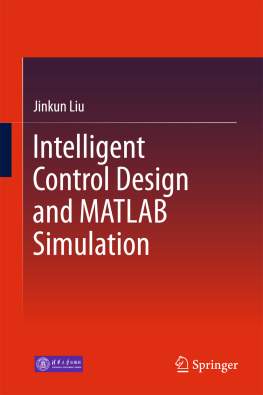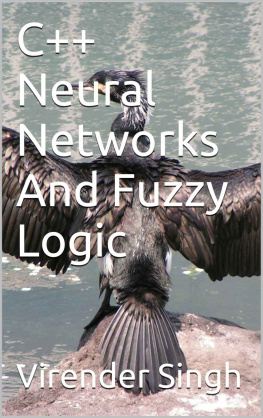Copyright 2010 by John Wiley & Sons, Inc. All rights reserved
Published by John Wiley & Sons, Inc., Hoboken, New Jersey
Published simultaneously in Canada
No part of this publication may be reproduced, stored in a retrieval system, or transmitted in any form or by any means, electronic, mechanical, photocopying, recording, scanning, or otherwise, except as permitted under Section 107 or 108 of the 1976 United States Copyright Act, without either the prior written permission of the Publisher, or authorization through payment of the appropriate per-copy fee to the Copyright Clearance Center, Inc., 222 Rosewood Drive, Danvers, MA 01923, (978) 750-8400, fax (978) 750-4470, or on the web at www.copyright.com. Requests to the Publisher for permission should be addressed to the Permissions Department, John Wiley & Sons, Inc., 111 River Street, Hoboken, NJ 07030, (201) 748-6011, fax (201) 748-6008, or online at http://www.wiley.com/go/permission.
Limit of Liability/Disclaimer of Warranty: While the publisher and author have used their best efforts in preparing this book, they make no representations or warranties with respect to the accuracy or completeness of the contents of this book and specifically disclaim any implied warranties of merchantability or fitness for a particular purpose. No warranty may be created or extended by sales representatives or written sales materials. The advice and strategies contained herein may not be suitable for your situation. You should consult with a professional where appropriate. Neither the publisher nor author shall be liable for any loss of profit or any other commercial damages, including but not limited to special, incidental, consequential, or other damages.
For general information on our other products and services or for technical support, please contact our Customer Care Department within the United States at (800) 762-2974, outside the United States at (317) 572-3993 or fax (317) 572-4002.
Wiley also publishes its books in a variety of electronic formats. Some content that appears in print may not be available in electronic formats. For more information about Wiley products, visit our web site at www.wiley.com.
Library of Congress Cataloging-in-Publication Data:
Lilly, John H., 1949
Fuzzy control and identification / John H. Lilly.
p. cm.
ISBN 978-0-470-54277-4 (cloth)
ISBN 978-1-118-09781-6 (ebk)
1. Fuzzy automata. 2. System identification. 3. Automatic controlMathematics. I. Title.
TJ213.L438 2010
629.8dc22
2010007956
For Faith, Jack, and Sarah
PREFACE
In 1982, when I obtained my Ph.D. specializing in adaptive control (the nonfuzzy kind), fuzzy control had not been explored to a very great extent as a research area. There had been only a handful of papers (probably <100) published on the subject up to that time, and some of us serious researchers did not take fuzzy seriously as a control method. Since then, of course, the number of papers and books written on some application of fuzzy sytstems has grown to tens of thousands, and many of us serious researchers, after realizing the potential of the fuzzy approach, have partially or completely redirected our research efforts to some aspect or application of fuzzy identification, classification, or control.
Roughly 10 years after graduating, I started reading anything I could find on the subjects of fuzzy identification and control, culminating in the creation of a graduate-level course on the subject at the University of Louisville. This book is an outgrowth of lectures I presented in this course over the past 10 years, plus some new material that I have not presented yet, but probably will at some point.
I wrote this book to present an introductory-level exposure to two of the principal uses for fuzzy logic: identification and control. This book was written to include topics that I deem important to the subject, but that I could not find all together in any one text. I kept finding myself borrowing material from several sources to teach my course, which is suboptimal for teacher and student alike. In addition, I found that many texts, although excellent, were written on too high a level to be useful as introductory texts. (It is ironic that a subject ridiculed by many as too easy quickly becomes so complex as to turn most people away once the basics are covered.) Consequently, I wrote this book, which includes subjects that I think important at hopefully not such a high level as to blow away most students.
The book is intended for seniors and first-year graduate students. Some background in control is helpful, but many topics covered in introductory controls courses are of little use here, such as gain and phase margins, root locus, Bode and Nyquist plots, transient and steady-state response, and so on. On the other hand, some of the subjects addressed in this book, such as tracking, model reference, adaptive identification and control, are only covered in advanced-level controls courses. This is in part what makes this subject difficult to teach.
The most helpful preparation would be some understanding of continuous- and discrete-time dynamic systems, and an appreciation of the basic aims and methods of control (i.e., stabilization, tracking, and model reference control). There is little in the way of advanced mathematics beyond differential and difference equations, transfer functions, and linear algebra required to read and understand this book.
The subjects of fuzzy identification and control are quite heavy in computer programming. In order to implement or simulate fuzzy systems, it is almost unavoidable to write computer programs, so it is assumed that the reader is comfortable with at least basic computer programming and computer simulation of dynamic systems. In this book, Matlab is used exclusively for simulations due to its ease of programming matrix manipulations and plotting. I have not relied on any Matlab canned programs (e.g., the Matlab differential equation solvers ode23, ode45, etc.) or toolboxes (e.g., the Fuzzy Logic Toolbox). One exception is the use of the LMI Control Toolbox used in Chapter 7 to solve a linear matrix inequality. The avoidance of these very powerful specialized tools that Matlab provides was done to give a measure of transparency in the example programs provided in the Appendix, and also because whatever computer language is used to implement these controllers may not (in fact, probably will not) have them.
ARRANGEMENT OF THIS BOOK
The arrangement of this book may seem strange to some. Chapter 5, which presents some well-known nonfuzzy modeling and control methods, may look out of place in the middle of the other chapters, which have to do with only fuzzy topics. It was suggested to me that the material in Chapter 5 either be placed in an introductory chapter or relegated to an appendix. However, I felt there is good reason to place it where it is.
Chapters 24 cover basic concepts of fuzzy logic, fuzzy sets, fuzzy systems, and control with Mamdani fuzzy systems. All controllers presented in Chapter 4 are designed on the basis of expert knowledge. Their design is not based on any mathematical model of the system they control, nor do they use any formal control method (pole placement, tracking, etc.). Therefore, there is no need to study mathematical modeling or control methods to utilize anything through Chapter 4.
On the other hand, Chapters 6 and 7 introduce TakagiSugeno (TS) fuzzy systems, which do necessitate the utilization of a plant model along with choice of some formal control methodology. Thus, the introduction of some standard modeling and control techniques seemed well placed between the Mamdani and TS developments. I felt that placing this material in either an introductory chapter or an appendix would reduce its chances of being read. At any rate, the chapters are as follows.













